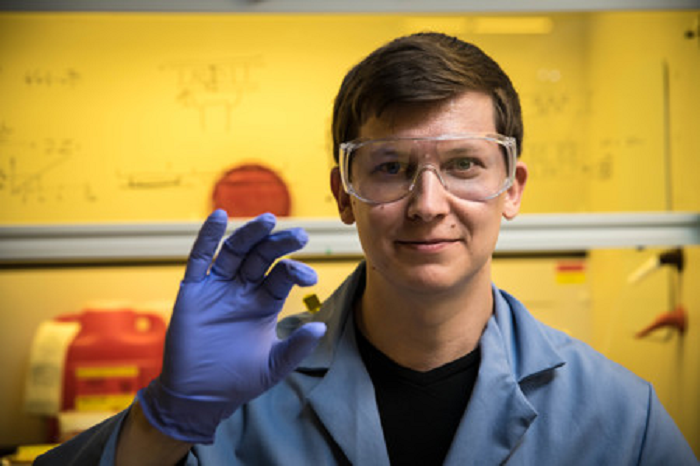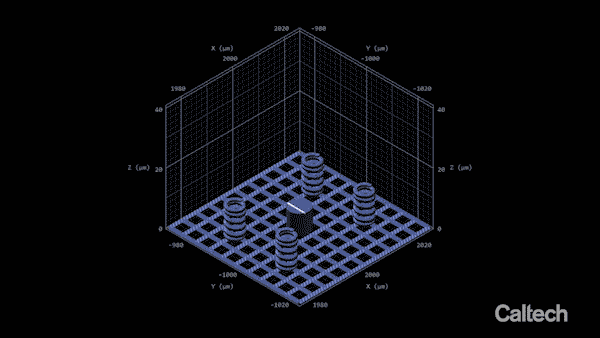3D printed objects smaller than a human hair, and invisible to the naked eye are commonly produced using a process called two-photon lithography. This method has been used to develop innovative medical treatments, security features, and even castles on the tip of a pencil.
In a new technique developed by the Greer Group at California Institute of Technology (Caltech) researchers have used two-photon lithography to 3D print metal structures. By producing dimensions no larger than 100 nanometeres, the Greer Group’s technique is capable of making metal features “an order of magnitude smaller” than any other metal 3D printing method.

The metallic reaction
Relying on a reaction between laser pulses and light-reactive material, two-photon lithography is necessarily polymer-based. Professor Julia Greer, supervisory author on the Caltech study, explains, “Metals don’t respond to light in the same way as the polymer resins that we use to manufacture structures at the nanoscale,”
“There’s a chemical reaction that gets triggered when light interacts with a polymer that enables it to harden and then form into a particular shape. In a metal, this process is fundamentally impossible.”
And so, the polymer ink used in the process is instead laced with fine metallic particles. As a demonstration, the Greer Group uses nickel, which is bonded to the polymer using ligands.

The secret of sub-millimeter scale
The Greer Group’s ink is 3D printed using a Photonic Professional GT from Nanoscribe GmbH, a system common to two-photon lithography experiments. Layer-by-layer, the team 3D prints complex lattice samples.
After 3D printing, lattices are heated to a temperature of 1,000 °C (around 1,800 °F) enough to vaporize any polymer content and fuse (but not melt) nickel particles together. The process is similar to that used in Desktop Metal Studio Systems.
When heated, 3D printed objects shrink by up to 80%. This is key to the high resolutions achievable by the Greer Group.
Andrey Vyatskikh, lead author of the study explains, “That final shrinkage is a big part of why we’re able to get structures to be so small,”
“In the structure we built for the paper, the diameter of the metal beams in the printed part is roughly 1/1000th the size of the tip of a sewing needle.”

To microbatteries and robots
Though small in scale, the discovered process has great implications for the production of micro and nanoscopic devices. Many other metals can be used in the process.
As detailed in the paper’s discussion, “Nanoscale AM of metals has direct implications and opportunities for streamlined production of complex sub-millimeter devices, including 3D MEMS, 3D microbattery electrodes, and microrobots and tools for minimally invasive medical procedures.”
The next step is to eradicate small voids left by polymer removal in the heating process.
“Additive manufacturing of 3D nano-architected metals” is published online in nature communications journal. It is co-authored by Andrey Vyatskikh, Stéphane Delalande, Akira Kudo, Xuan Zhang, Carlos M. Portela and Julia R. Greer.
Is this award-winning research? Nominate the Greer Group now in the 2018 3D Printing Industry Awards.
For more industry-leading research subscribe to the most widely read newsletter in the industry here, like 3D Printing Industry on Facebook and follow us on Twitter.
Featured image shows a microscopic spring lattice 3D printed using Caltech’s metal 3D nanoprinting approach. Image via Caltech


